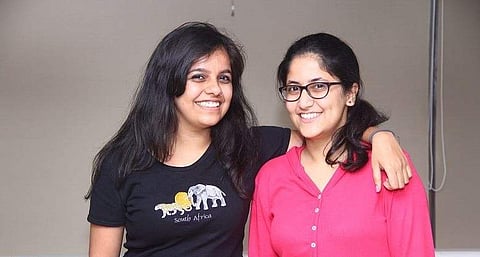

According to official statistics, there are only about 250 sign language interpreters in the entire country for as many as 18 million Indians with hearing disabilities. Adding to this, there is almost no access to sign language content, which makes it difficult for children and even adults who are hearing-impaired to learn and communicate on a daily basis. To address this evident gap, two 28-year-old industrial designers from MIT Institute of Design in Pune started Bleetech Innovations. Founded by Janhavi Joshi and Nupura Kirloskar in 2015, Bleetech is an online platform replete with Indian Sign Language content for the deaf community to aid in their learning process and hence, bridge the gap between hearing-enabled and hearing-impaired individuals.
Their key offerings include an app called BleeTV on which they host a plethora of learning and educational content mainly for the hearing impaired. "There are two versions of the app — one for young adults mostly seeking knowledge, employability skills and learning English. We even have paid courses for youngsters, such as skill development. Another version of the app is for kids and deaf students on which we work by partnering with special schools. It is called the BleeTV Library. It is a digital library for deaf students to get access to learning, information and even entertainment in sign language. We provide these through tablets in these schools. Apart from this, we also conduct interactive sessions with the kids, we also have a teacher training programme included in this as well. We realised that even teachers don't know sign language that well," explains Janhavi.
Bleetech partners with schools to provide access to their content — the major ones are in Maharashtra and there's one in Meghalaya and one in Karnataka too. There are various topics that Bleetch covers for school children, such as Science-related topics, experiments, news, value education and a lot of other Indian Sign Language content, which are not taught much in schools. "We have also partnered with various content creators and platforms whose content we host on the Bleetech platform as well," she adds. They have already benefitted more than 12,000 hearing-impaired individuals in the last five years.
Speaking about why they chose to develop such a platform, Janhavi adds, "One of the most obvious gaps or difficulties this community faces is getting easy access to information — in the education sector or even in their regular lives. Spoken languages are not very developed, they only depend on sign language in India. You can notice that there's almost no access to sign language content here. That's what we wanted to address after we identified this gap. We began with a simple question-answer forum that later turned into a digital platform."
During the COVID-19 pandemic, Bleetech also came up with remote learning kits for hearing-impaired students as a lot of them did not go to schools or have access to the internet. "We designed a workbook especially for deaf students, along with some basic stationery and we made sure these kits reached their houses. We wanted them to at least have books that are specially designed for them. We put in QR codes which, when scanned, open our videos in sign language explaining the content on that specific page. Students who had access to the internet or devices could do this. We also provided the BleeTV Library app for free during the pandemic to these kids to stay connected with learning. We opened access to other children as well. Children from schools we hadn't partnered with could also access the content for free," shares Janhavi.
Speech therapy and oralism are quite common in India when it comes to modes of teaching the hearing impaired. Janhavi and Nupura feel those, however, are not the first choice for learning and communication. "It is not a wrong method of teaching but these kids require a lot of support from both teachers and parents. They need to be trained for 14–15 years, which is not possible in our country as we can't provide that to each and every kid. Indian Sign Language has to be the first choice or mode for communication. It is important to teach them their first language which is sign language and then, all the other languages can subsequently be taught. The foundation of sign language is missing and thus, in a lot of cases, their brain developmental is hampered," adds Janhavi.
As for their future plans, the duo wants to partner with more schools. "There is a lack of skillset in the country when it comes to sign language communication or learning. We want to support teachers, schools, organisations and find better ways to make sign language content more accessible to deaf kids," concludes Janhavi.
